Top 10 Forgotten Terrorist Attacks in History
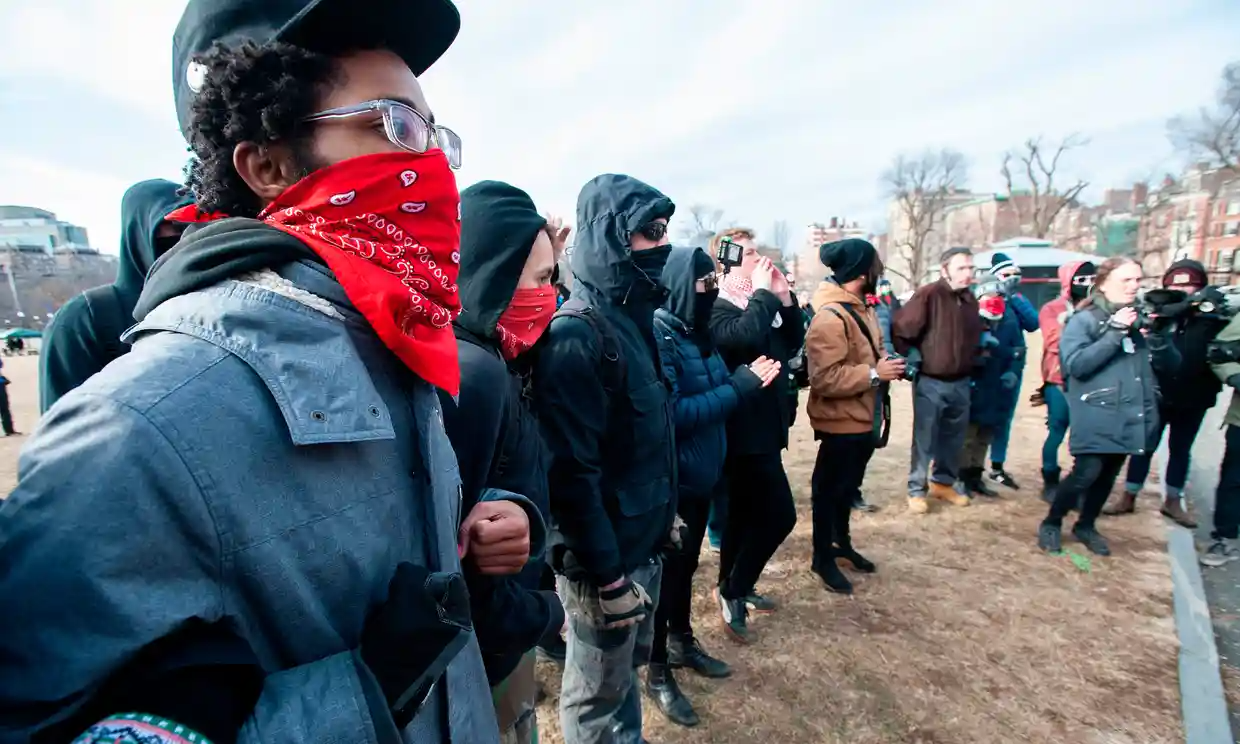 FACTS about ANTIFA – alleged terrorism by Trump? FACTS about ANTIFA – alleged terrorism by Trump? |
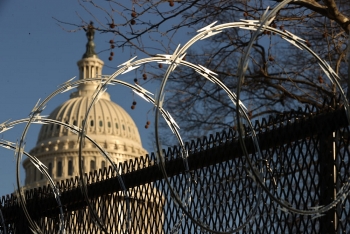 The Full Text of the New U.S. Intelligence Classified Report that Warns Domestic Terrorism The Full Text of the New U.S. Intelligence Classified Report that Warns Domestic Terrorism |
| Contents |
Terrorism Definitions
FBI - International terrorism: Violent crimes carried out by individuals or groups that have ties to or are inspired by countries or organizations that have been designated as supporting terrorism abroad.
FBI - Domestic terrorism: violent, criminal acts carried out by individuals or groups in order to advance political, religious, social, racial, or environmental ideologies that have domestic roots.
One popular definition of terrorism in the United States is the systematic or threatened use of violence to instill fear among a population or a government and thereby bring about a change in politics, religion, or ideology.
Top 10 Forgotten Terror Attacks in History
In Missouri and Kansas, respectively, pro-Confederate Bushwhackers and pro-Union Jayhawkers carried out cross-border raids, attacked civilians and soldiers, stole goods, and burned down farms during the American Civil War. The most notorious incident happened in Lawrence, Kansas on August 21, 1863, when William Quantrill's Raiders ransacked the town and killed about 190 civilians due to the anti-slavery sentiment in the community.
The 1863 Chesapeake Affair and the 1864 St. Albans Raid were both terrorist attacks that took place during the conflict, with the former being carried out by British subjects.
Organized groups or lone white supremacists have targeted African-Americans in numerous acts of domestic terrorism since the end of the Civil War.Lynchings, hate crimes, shootings, bombings, and other violent acts are examples of this terrorism. The majority of these violent crimes in the US took place in the South, and they included crimes carried out by the Ku Klux Klan (KKK).The Rosewood Massacre, the Tulsa Race Massacre, and the Wilmington Insurrection were all acts of white supremacist terrorism.
It elevated terrorism to the top of the cultural consciousness for years. Additionally, it completely obscured decades of terrorist activity, leading to a greatly distorted perception of the past and how peaceful it supposedly was. However, long-forgotten problems have suddenly claimed the lives of dozens, if not hundreds, of people.
1. Inn Din (Myanmar 2017)
For Western countries, Southeast Asia has frequently been something of a blind spot. Therefore, a large portion of the rest of the world paid little attention in 2017 when more than 690,000 Rohingya Muslims fled Bangladesh and sought refuge in Myanmar. The 2014 Bangladesh census left out all Rohingyas due to the extreme hostility toward them that existed there and was officially sanctioned. Attention wasn't paid until it became known what paramilitary forces were doing to Rohingya.
Ten men in a Rohingya community near Inn Din (a town on Myanmar's northwest coast) were jailed on September 1. Ten of them were executed and interred the following morning after being made to witness their neighbors dig a mass grave. The same paramilitary group that carried out the mass murder later raided other Rohingya homes, torching homes and taking cattle and vehicles.
The official narrative claimed that the executionees were a part of a 200-person terrorist group that attacked the town of Inn Din, but local residents refuted this claim. In actuality, the ten people who were executed were merely a part of a group looking for safety on a beach, according to civilian witnesses.
Reuters reporters who were investigating the attack were detained as a result of their work. The terrifying danger that refugees face today is similar to what many of us who may one day join them in the future may anticipate.
2. FLQ Attacks (Canada 1960s-70)
When it comes to separatist movements, The Front de Libération du Québec came into existence in the Canadian province of Quebec at the beginning of the 1960s. They made it clear that they wanted to eradicate all British influence in Canada. Ironically, Georges Schoeters, a Belgian, was one of the movement's founders rather than a Canadian. However, they quickly demonstrated that they were prepared to resort to violence to further their objectives.
For years, they sent bombs to mail boxes and Royal government buildings. Later, they started sending bombs to companies where workers were on strike. As a result of their sheer number, Pierre Paul Geoffroy would admit to taking part in 31 bombings. Five people were killed and one suffered serious injuries during the first six years of the campaign, according to The Globe and Mail.
However, at the time, the Canadian government's response to a FLQ attack was more significant than any of the group's actual attacks. The separatists began kidnapping people in 1970, most notably the British diplomat James Cross and the deputy premier of Quebec Pierre Laporte.
In response, the government suspended civil liberties under the War Measures Act, which was viewed as being so draconian that the time period became known as the October Crisis. Laporte's body was found in a trunk, but James Cross was found alive. The FLQ was reportedly eradicated by 1976 after becoming so unpopular and heavily infiltrated by government agents.
3. The Machertos (Puerto Rico 1954)
Whatever one's opinion of the ties that exist between the United States and its overseas territory Puerto Rico, they are unquestionably much improved over what they were in the 20th century. As an illustration, on March 1, 1954, members of a Puerto Rican independence group broke into the House of Representatives and shot five members. There were reportedly 100 bombings in the US between 1974 and 1981, many of which were carried out by the Armed Forces of National Liberation. The worst of these occurred in Lower Manhattan's Fraunces Tavern in January 1975, leaving four people dead and 53 injured.
By the late 1970s, organizations like the Machertos had the US military squarely in their crosshairs. Four navigational facilities managed by the Federal Aviation Administration and Coast Guard were destroyed on July 14, 1980, disrupting air travel throughout Latin America. The Machertos' entry into the Muniz Air National Guard Base, however, was unquestionably the most sophisticated single attack.
On January 16, 1981, the Washington Post reported that they disabled two fighter jets and destroyed eight others. Fortunately, nobody was hurt, but it is estimated that the damage cost $45 million. Even though it happened a long time ago, many people still remember it, so it should be considered by those who support Puerto Rico becoming a state.
4. The Lustgarten Attack (Berlin 1942)
The majority of depictions of Jews living in the Third Reich show them only as victims, but history demonstrates instances of pushback. In Lustgarten, Berlin, on May 18, 1942, the nearly entirely Jewish Baum Gruppe, led by Herbert Baum, attacked a display of Reich art.
Surprisingly, the exhibit that incensed them was anti-Soviet rather than anti-Jewish because it was mockingly referred to as "the Soviet Paradise." The attack mainly involved ineffective arson, which is why the exhibit reopened the following day. In their defense, the Baum Gruppe consisted mainly of kids and didn't resemble an experienced partisan group.
Unsurprisingly, the reaction was brutally quick. Nearly 500 Jews were detained, and many of them were executed without trial. At the time, 258 prisoners were put to death, according to The New York Times. The Gestapo made a point of asserting that Herbert Baum committed suicide in his cell as opposed to being executed despite their harsh response.
It was unclear why they bothered with such a public relations stunt. Rarely has a terrorist to one person's eyes been a freedom fighter to another.
5. Ford Motor Protests (USA 1932)
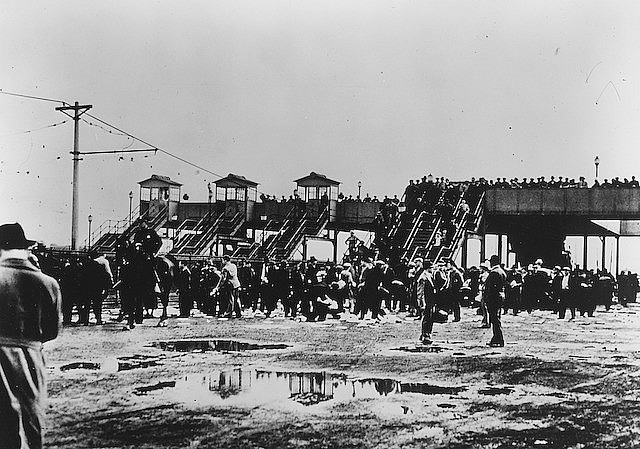 |
| Ford Motor Protests |
Despite decades of setbacks, the Great Depression resulted in a surge in expanded labor rights, and many larger companies only became more ruthless than ever as a result of this growing worker power. In order to suppress union activity in Ford factories, Harry Bennett, who is frequently referred to as Henry Ford's "right hand man," had always been aggressive. However, on March 7, 1932, he reached a completely new level. In what was known as the Ford Hunger March that day, 3,000 unemployed Ford workers marched to Dearborn, Michigan.
When Bennett's men started firing, including using a machine gun, it quickly turned into the Ford Massacre. Particularly Bennett was so furious that some protesters threw rocks at him that he shot out his own gun, took a gun from a policeman, and shot out that one as well. A total of four marchers were killed, including two teenagers, and dozens were injured; some of the injured were later detained while still lying in hospitals.
But the workers persisted in their conflict. Again in Dearborn, Michigan, on May 26, 1937, United Auto Workers members, including Women's Auxiliary chapter 174 members, were distributing flyers at the Miller Road overpass. Bennett stooped, continuing his direct criticism of unions. One man had his back broken during the subsequent beatings, another had been kicked down a flight of stairs, and any nearby newspapermen were also attacked.
James Kilpatrick, a particularly cunning photographer, gave up some blank film that he hadn't yet shot while concealing his negatives. The photos clearly showed that the anti-union protesters were the aggressors, which helped the union because public opinion changed in favor of the workers. The Ford employees had a recognized union within four years.
6. An Assassination (Marseille 1934)
Alexander I of Serbia had one of the more contradictory reigns of the 20th century. He served as Serbia's military's commander in chief during World War I, serving as a hero in the Balkan Wars that preceded it. On October 31, 1918, he was proclaimed Prince Regent. However, a significant assassination attempt occurred in three years that was reminiscent of the attempt on the life of the previous Alexander of Serbia in 1903.
He officially assumed the throne in 1922, but soon had to contend with Croat separatists who even went so far as to kill his Croat deputies. In 1929, just in time for the Great Depression, he intensified his policies of unification by appointing himself dictator and enacting reforms to standardization. He made alliances and undertook diplomatic missions to reduce tensions.
The populace continued to favor a parliamentary government despite his achievements. When Alexander I traveled to France and met his demise on October 9, 1934 in the city of Marseille, he was in the planning stages of developing one. Vlado Chernozemski, one of the Croatian separatists who had been giving Alexander so much trouble for years, was the man who killed him.
Nearly thirty years before the renowned Zapruder Film, Alexander I's assassination held the distinction of being the first terrorism act to be captured on film. Adolf Hitler allegedly watched and rewatched the footage to observe the French police's response because he believed their failure to protect the King demonstrated a lack of national character. This is according to a Columbia University paper on the subject.
Whatever the case, there is little doubt that the terrorist attack was the catalyst for a number of military initiatives, including Mussolini and Hitler's incursions into the Balkans throughout the 1930s, which would eventually lead to Europe entering a second war. By killing Archduke Ferdinand, a Serbian assassin started World War I, and 20 years later, another assassin contributed to the start of World War II.
7. Bath School Disaster (Michigan, USA 1922)
The Bath, Michigan community constructed the Consolidated School in 1922, which appears to have planted the seeds for this attack. Local property taxes had to be increased to pay for the purchase, which upset farmer Andrew Kehoe enough to win the election for treasurer of the school board and vehemently control the school budget. He smuggled World War I surplus dynamite into the school's basement in May 1927 and detonated a time-activated bomb on the 18th at 8:45 in order to avoid losing his farm.
He drove there with a trunk full of even more explosives, killing himself and five others because he was unhappy with the damage he had caused. There were six adults in addition to 38 students who perished in the school attack. There were hundreds of pounds of additional explosives in the basement that did not detonate, so it was expected to get much worse. Kehoe also burned his farmhouse down after killing his wife and several farm animals. When the police arrived, they discovered the short but terrifying manifesto "Criminals are made, not born" posted on his fence.
The perpetrator of this act should have been as notorious as Ed Gein or Charles Whitman, and the act itself should have become one of the most infamous atrocities in American history, but there was a very straightforward reason why it was quickly forgotten by the larger culture.
Three days later, Charles Lindbergh's illustrious and successful solo transatlantic flight came to an end. For the majority of the summer, this event dominated news headlines across the country. Some historical publications, such as a 2018 article by Time, have claimed that Kehoe might have won some public support if he had destroyed some institution, like a bank, as some people were doing in that era (especially during the impending Great Depression).
8. Wall Street Bombing (New York 1920)
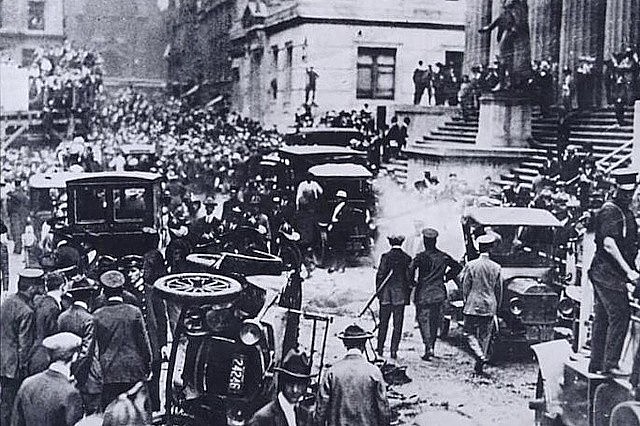 |
| Wall Street Bombing |
When it comes to terrorist attacks, September seems to be a particularly unlucky month for New York City. On September 16, 1920, at or around 12:00 p.m., almost exactly ten years after the Los Angeles Times Bombing, a recently abandoned cart parked at 23 Wall Street across the street from the J. P. Morgan Building exploded. 38 people were killed and 300 were hurt in the explosion, which also sent iron sash weights used to surround the dynamite flying and overturned nearby vehicles. Junius Morgan, the grandson of J. P. Morgan, was one of the injured people.
Because no one claimed responsibility for the bombing and no leads emerged, there was no resolution from a trial in the case of the LA Times bombing. Though he had an alibi that prevented him from being charged, radical Italian anarchist Pierto Angelo was suspected, and he was deported despite that. Numerous people were detained and questioned, including hundreds of workers from stable and window sash weight factories, but the case wasn't any closer to being solved when it was closed in 1940.
9. Los Angeles Times Bombing (1910)
 |
| Los Angeles Times Bombing |
In fact, labor disputes had grown even riskier by 1910, even in heavily unionized areas like Los Angeles. Owner of the Los Angeles Times Harrison Otis was one of the more flamboyant opponents of labor unions. Otis was so despised that he traveled in a limo equipped with a cannon.
He is credited with having first used the idiom "you're either with me or you're against me." On September 30, 1910, James and John McNamara, two ironworker brothers, plotted to frighten him by detonating sixteen sticks of dynamite in the basement of the publication.
They started a terrible fire that killed 21 people and injured dozens more because they were unaware that there were gas lines underneath the structure and how flammable the ink was. Otis, who hired William Burns, one of the most renowned private investigators in the country at the time, was one who was spared death.
Until Ortie McManigal, who supplied the brothers with explosives, named them in his confession in April 1911, the brothers managed to avoid capture. Famed attorney Clarence Darrow accepted their defense case, and it's claimed that he conducted his own investigation and discovered additional proof of the McNamaras' guilt.
The brothers admitted to their crimes, and they were incredibly lucky that John McNamara, the senior, received a life sentence and James McNamara, a fifteen-year sentence. That was a shorter period of time than they did to set back American labor rights.
10. The Haymarket Affair (USA 1860s)
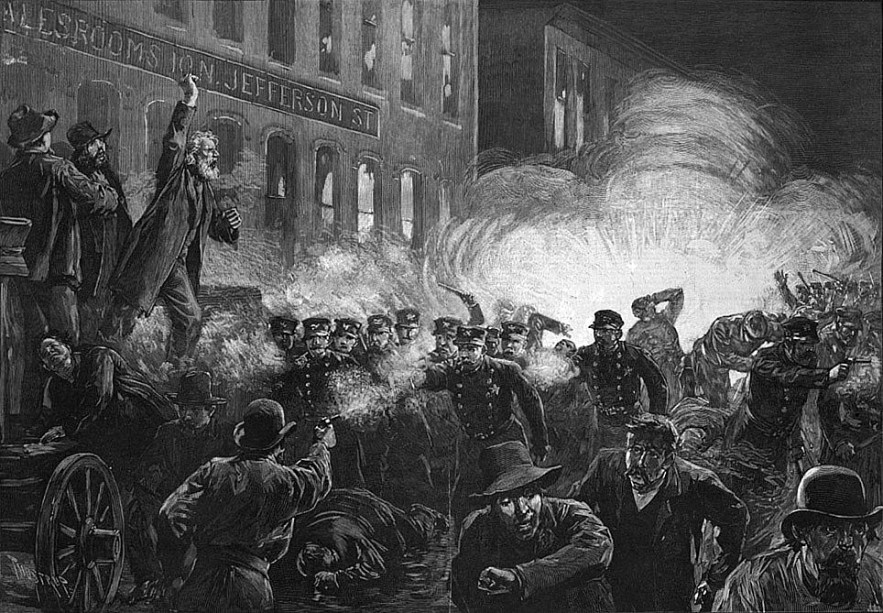 |
| The Haymarket Affair |
Looking back, it can be shocking to see how brutal law enforcement was willing to be with working class people given how revered they are in the American mainstream today. Workers at the McCormick Harvesting Machine Company in Chicago, Illinois, were protesting on May 3, 1886, as part of a movement that had been going on since at least the 1860s for eight-hour shifts. Police opened fire on the workers in an effort to protect scabs, which resulted in one fatality and numerous injuries.
Due to the rapid escalation of the situation, there were well over 1,000 protesters the following day, and during a clash with the police, an unidentified person threw a bomb into the police ranks. Although accounts differ as to how many people died as a result of the explosion and how many from friendly fire that followed, the final tally was eleven, including seven police officers. 100 more people sustained injuries.
In additional retaliation, the state of Illinois accused and convicted eight anarchist leaders despite the absence of any proof that they were accountable for the bombing. Four of those were put to death on November 11, 1887; one committed suicide while incarcerated. Governor John Altgeld pardoned the three remaining suspects in 1893 on the grounds that they had endured an unfair trial.
It's an understandable decision given that there was evidence that some jury members had stated their convictions of the defendants before the case even started, all of the accused had alibis for not being at the protest, and there were witnesses who said the defendants hadn't thrown the bomb.
In Coclusion
Since the terrorist attacks on September 11, 2001, the FBI has made it a priority to maintain its ability to respond quickly and nimbly to changes in the nature of the danger posed by terrorism. The panorama of potential dangers has significantly shifted in the years after these assaults, and international terrorism is still a significant concern.
The threat posed by domestic terrorism is also still very much present in the larger picture. Actors continue to cross the line between expressing rights protected by the First Amendment and committing crimes in order to achieve their own violent goals.
 Which Monarchs Have Reigned the Longest In World History - Top 20 Which Monarchs Have Reigned the Longest In World History - Top 20 The longest monarch in the world lasted for over 70 years. Check out Top 20 Longest Reigning Monarchs In the World History. |
 Top 13 Biggest Mistakes That Cost Millions Of Dollars In History Top 13 Biggest Mistakes That Cost Millions Of Dollars In History You have to pay the price once you make mistakes. Many had to pay expensive prices for their big mistakes in the world history. |
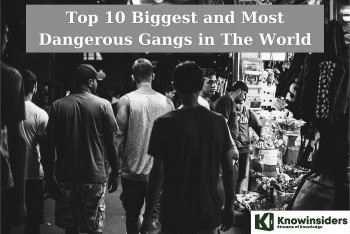 Top 10 Most Dangerous Crime Gangs in The World Today Top 10 Most Dangerous Crime Gangs in The World Today KnowInsiders.com will discuss the top ten most dangerous gangs in the world in this article. Each of these gangs is extremely powerful and capable of ... |
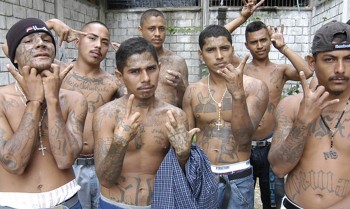 Top 10 Notorious Crime Gangs in the US Today Top 10 Notorious Crime Gangs in the US Today The United States is home to numerous criminal groups and organizations, including prison gangs, extortion rackets, and neo-Nazis. |























